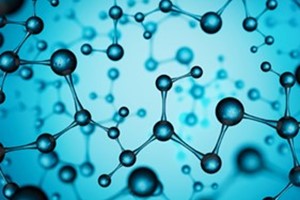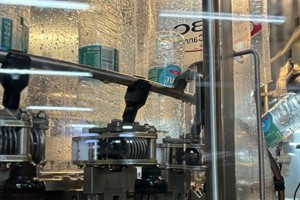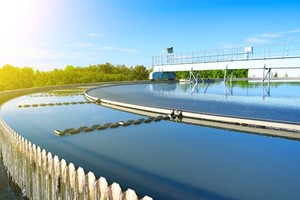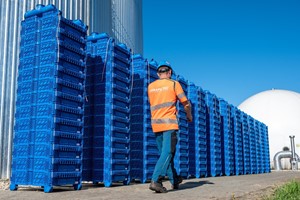The long-term performance of colloidal activated carbon to eliminate PFAS exposure risk is proven on sites globally.
Firefighting training areas at military and commercial airports are among the most significant sources of contamination of PFAS (per- and polyfluoroalkyl substances) in groundwater and drinking water globally. According to a newly published modeling study, in situ (i.e., in place) passive filtration using colloidal activated carbon represents a significantly more sustainable long-term solution to removing the PFAS exposure risk originating from these sites.
Groundwater PFAS Impacts At Airports
Based on data1 from the Social Science Environmental Health Research Institute (SSEHRI) at Northeastern University, 437 airports, AFFF (aqueous film-forming foam) sites, or military facilities have confirmed PFAS contamination in groundwater. Many of these facilities have PFAS contaminant plumes in groundwater threatening public and private drinking water sources or surface waters.
PFAS contamination identified at firefighting training areas represents a high exposure risk for many communities. These PFAS source zones were created by spraying AFFF-containing PFAS to extinguish fires during fire training exercises, usually conducted in open fire pits or on designated areas of airport tarmacs. The mandatory periodic training exercises left high masses of toxic PFAS chemicals directly exposed to rainwater.
Rainwater causes PFAS and other contaminants (e.g., petroleum hydrocarbons from jet fuel) to leach into groundwater. Once PFAS reach groundwater, they are readily transported by it. Since the more toxic PFAS compounds such as perfluorooctanesulfonic acid (PFOS) and perfluorooctanoic acid (PFOA) do not appreciably degrade in the environment, they can travel for miles downgradient toward public water supply wells, domestic drinking water wells, or surface waters.
One estimate suggests that more than 200 million people2 in the U.S. may be exposed to PFAS in their drinking water. Additionally, the forever chemicals are found in most streams and lakes with concentrations of PFAS, and PFOS specifically, in fish, triggering “Do Not Eat” warnings nationwide. Unsurprisingly, drinking water and surface water PFAS impacts are often the highest downstream of airports and other AFFF release sites.
Sustainable PFAS Groundwater Remediation
Given the scale of the PFAS problem at airports and military bases, there is substantial interest in identifying technologies and approaches that can sustainably remove the PFAS exposure risk from them. One approach continuing to gain critical acceptance and deployed worldwide uses colloidal activated carbon (or CAC) to transform the groundwater aquifer into a massive underground filter. This filter immobilizes PFAS, preventing the contaminants from reaching drinking water wells, surface water, or other downstream receptors.
Commercially known as PlumeStop, CAC is activated charcoal sourced from coconuts, milled into red blood cell size particles, and suspended in a food-safe solution to create a liquid, colloidal form of activated carbon. Ink-like in appearance, the patented novel carbon form is nonclumping, allowing it to slip through the soil or rock pores. In the process, PlumeStop “paints” the subsurface with highly reactive carbon, forming an expansive subterranean filter covering 100 acres for each pound of carbon attached to the aquifer matrix.
The below-ground CAC filter is installed as one or a series of permeable reactive barriers (PRBs) between a PFAS source and a downgradient receptor (e.g., water well or stream). Based on known measured rates of contaminant flux, these PRBs are engineered to immobilize PFAS for decades or longer.
The default method historically used to mitigate PFAS involves pumping groundwater above the surface for treatment, an energy-consuming activity generating a massive carbon footprint. A single continuously operating pump-and-treat (P&T) system used to control a PFAS plume can generate millions of pounds of CO2 emissions over its lifetime and even more for hauling the PFAS-saturated wastes to a landfill, where PFAS may ultimately leach back into the environment, starting the process all over again.
More recent experimental P&T approaches seek to destroy the PFAS, subjecting the pumped water to high temperatures, pressures, or energy inputs needed to break the resilient carbon-fluorine bonds. The energy required to accomplish this destruction adds to the carbon footprint substantially. While destructive technologies such as supercritical water oxidation and electrochemical oxidation may be adequate for specific applications (e.g., treating landfill leachate), they are not sustainable for addressing large low-concentration PFAS plumes in groundwater.
In contrast, the in situ CAC treatment process is 100% powered by naturally occurring groundwater flow. This passive approach to preventing plume movement offers one of the only sustainable solutions for addressing PFAS in groundwater.
Ryan Moore














